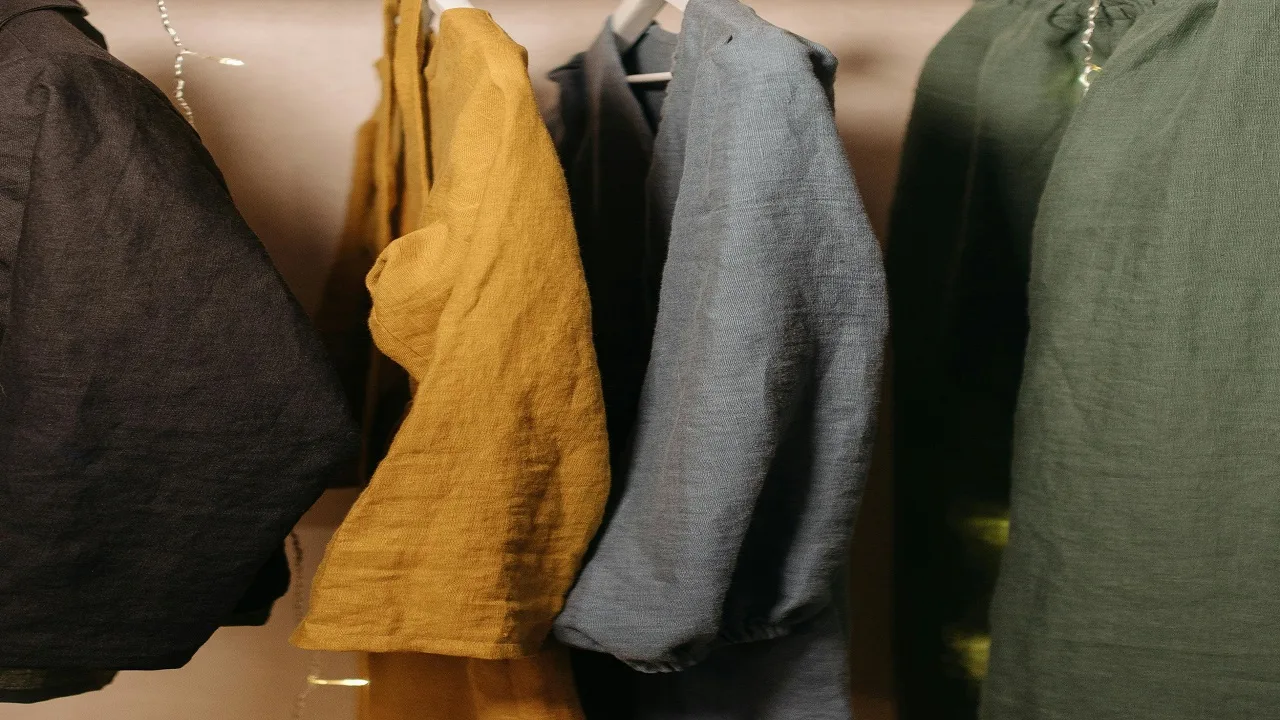The fashion industry uses a lot of water, trash, and chemicals that are bad for you. People are picking sustainable fashion to lessen their impact on the world without giving up style as they learn more about these problems. An outfit that is good for the earth encourages fair business, caring for the environment, and careful usage.
A sustainable wardrobe is easier than it seems. Careful choices, quality items, and understanding your clothes’ lifespan are crucial to creating an eco-friendly wardrobe that suits your style and values.
1. Choose Sustainable Fabrics
Sustainable apparel is essential to an eco-friendly wardrobe. Making polyester and non-organic cotton requires plenty of water, energy, and chemicals. Sustainable textiles decrease environmental impact by using natural, renewable, or recycled materials.
Choose flax-based organic cotton or linen for less water and chemicals. Another eco-friendly fabric is pest-resistant hemp. Tencel, a wood pulp fabric, is made closed-loop to save water, energy, and waste.
Reduce waste and utilize outmoded resources using polyester made from recycled plastic bottles. Your wardrobe’s environmental impact may be reduced by choosing eco-friendly fabrics.
2. Buy Quality, Timeless Items
Fast fashion’s fluctuating trends and cheap items stimulate additional purchases. This wastes and creates clothing that are quickly outdated. A sustainable wardrobe requires high-quality, long-lasting goods.
Instead of inexpensive, trendy clothing that will be thrown away after a few wears, choose durable, adaptive, and classic garments. Good clothes may be worn season after season, saving money and reducing the need to buy new ones.
Buy versatile, wardrobe-matching items. Neutral colors, classic cuts, and simple patterns are always popular. Quality over quantity is key to a durable wardrobe.
3. Support Ethical and Eco-Friendly Brands
Supporting ethical and sustainable enterprises helps build an eco-friendly wardrobe. Fashion companies are opening up their supply chains and reducing their environmental impact.
Brand selection prioritizes fair labor, sustainable fabrics, and waste minimization. Green businesses may be Fair Trade, GOTS, or B Corp certified. Support small-batch or zero-waste clothing manufacturers.
Shopping at eco-friendly stores helps environmentally and worker-friendly companies. You join a growing fashion industry transparency and accountability movement.
4. Embrace Secondhand and Vintage Shopping
Using vintage garments to create an eco-friendly wardrobe is sustainable. Used clothing last longer and save resources.Thrift stores, consignment shops, and online marketplaces like Depop and Poshmark provide unique, affordable things. Vintage garments are timeless and allow you to construct a sustainable, distinctive outfit.
Clothing swaps with friends are another fun and eco-friendly way to refresh your wardrobe without buying new clothes. Buying used and vintage lowers waste and encourages sustainable fashion.
Conclusion
Greening your clothes helps the environment and your style. Choose sustainable materials, quality goods, ethical firms, secondhand shopping, and take care of your clothes to assist the environment and express your values.
Sustainable fashion reduces waste, extends life, and protects the environment. With these strategies, you may have a stylish, eco-friendly wardrobe that benefits the planet.
